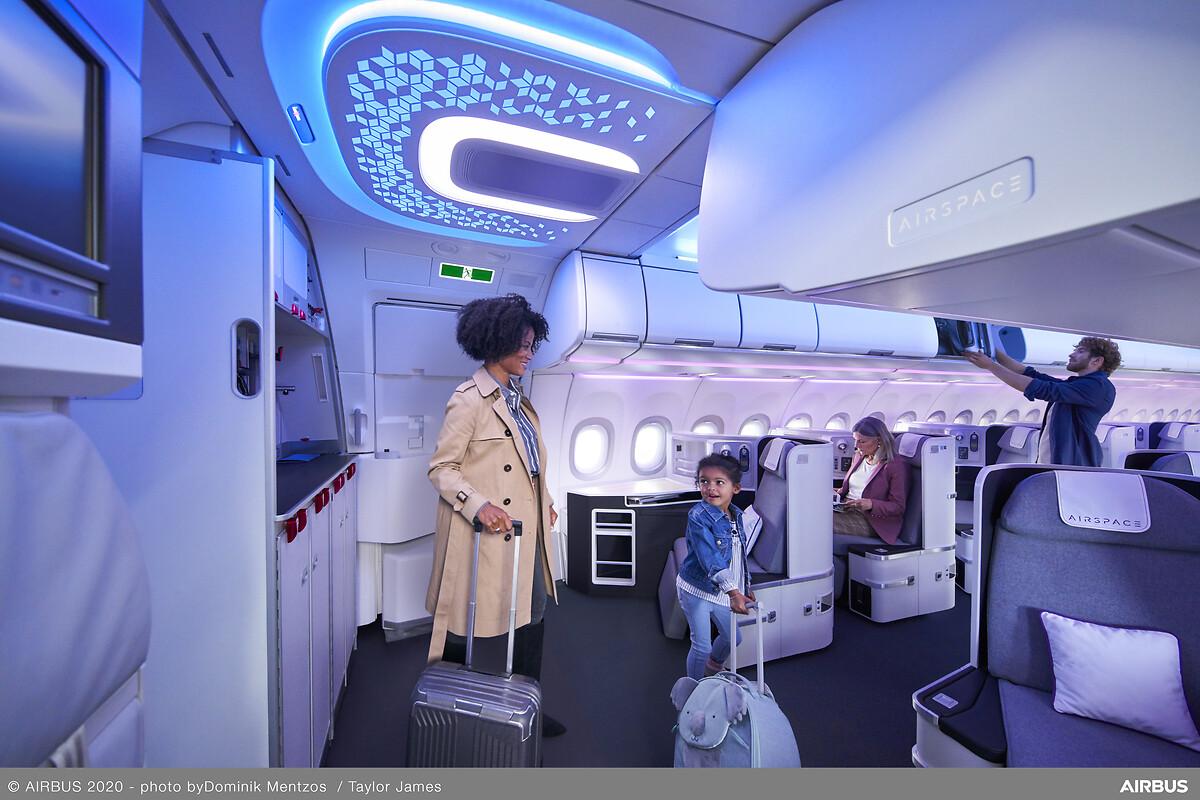
Airbus has designated one of its three instrumented A350 test aircraft—MSN002—as Airspace Explorer, using it as a flying testbed to evaluate, demonstrate and certify its Airspace cabin design concepts. Because it is in the flying display, relatively few show visitors will have a chance to go on board, but those who do will get a first glimpse at the future of commercial air travel.
"You have a normal Airspace 350 cabin in there, but we have integrated four zones where you can see things that are not available today,” says Ingo Wuggetzer, Airbus vice president of cabin marketing. These include: a 65-in. OLED (organic light-emitting diode) screen dominating the aircraft’s entrance area; a system that projects images on the ceiling of the business-class area; a galley service that is digitally networked to enable cabin crew to allocate specific meal storage locations for each individual seat; and a system that allows passengers to control and store seat positioning using a smartphone and a QR code.
The Airspace cabin concept was introduced by Airbus in 2016 and immediately won several design awards. Appearing first on the A350, it is now available on narrowbody airliners, with JetBlue and Lufthansa the first airlines to operate A320s with Airspace cabins. Although some of the goals Airbus had for the concept were around giving their fleet a unified look and feel, the options for individual airlines to customize the cabin to their own requirements are considerable.
“Our philosophy is to deliver a great frame to the airline and they can paint their own picture on their canvas,” says Wuggetzer. He points to the contrast between the JetBlue aircraft, which are flying between London and New York, and the Lufthansa airplanes, which are being used on shorter-haul routes.
“JetBlue needed a great cabin for long-range flights,” he says, “so that’s what we designed for them. It really looks like a widebody. There are 10 different lighting scenarios with the same LED system we have in a 350. The lavatories look amazing. They have a business-class area designed like a boutique hotel. Lufthansa use that aircraft very differently - more a feeder aircraft into hubs. They have huge [luggage] bins with 40% more volume, which is perfect for feeders because it's easy to board and everybody's happy to put their luggage in there.”
But the concept is not just about improving the look and the comfort. Wuggetzer points out how some future aspirations—replacing in-flight entertainment screens with thin, flexible OLEDs, for instance—will save a lot of weight, and therefore feed in to both Airbus’ and their customers’ carbon-reduction efforts.
And the lessons of the COVID pandemic are also helping influence future design considerations. Wuggetzer says that academic and in-house studies prove an airplane cabin is a COVID-safe environment, but communicating that to anxious passengers is no easy task.
“Surfaces in lavatories have antimicrobial coatings, but nobody knows because the surface doesn't speak to them,” he says. “On MSN002 we've introduced a hygiene label as a first step,” Wuggetzer says. “So far, it’s the best idea to make [hygiene] visible. We put a nice logo near the entrance, and say that it's an Cleanspace hygiene label, then repeat it where we applied it. So you put them on the surfaces in the lavatory, on the wash table, on the side wall—people remember it. A lot of it is about perception and knowledge,” he adds.
